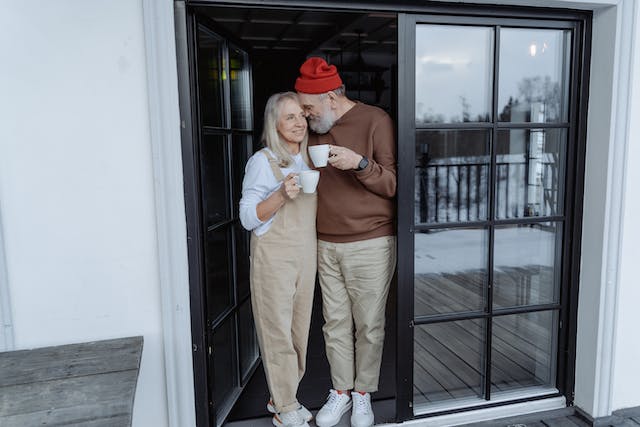In a world where the population of senior citizens is rapidly increasing, understanding their living preferences and needs is crucial. This article delves into the current landscape of senior living, focusing on the growing trend of aging in place. We’ll explore the emotional, psychological, and economic aspects that influence seniors’ decisions to stay in their homes, supported by the latest statistics and facts.
The Current Landscape of Senior Living
Overview of Various Senior Living Options
Senior living options range from nursing homes to assisted living facilities. However, a significant shift is occurring in senior living preferences.
Trends in Senior Living Preferences
There’s a noticeable trend towards aging in place, with seniors showing a strong desire to stay at home rather than move to assisted living facilities.
Shift Towards Aging in Place
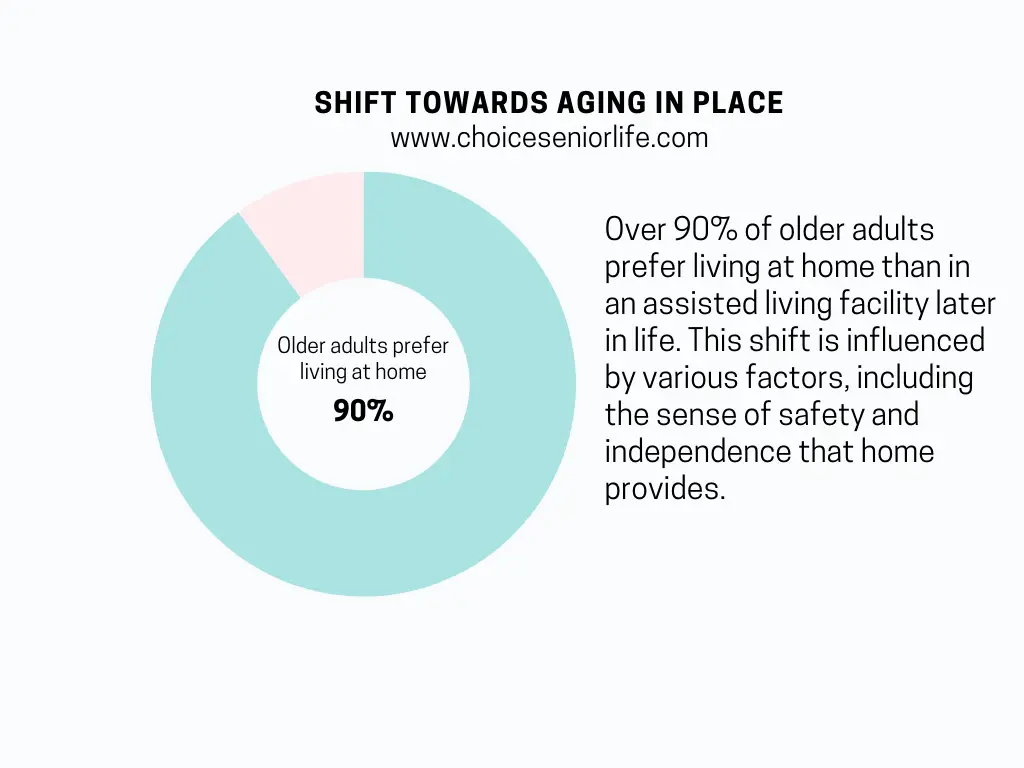
Over 90% of older adults prefer living at home than in an assisted living facility later in life. This shift is influenced by various factors, including the sense of safety and independence that home provides.
The Significance of Home for Senior Citizens
Emotional and Psychological Benefits
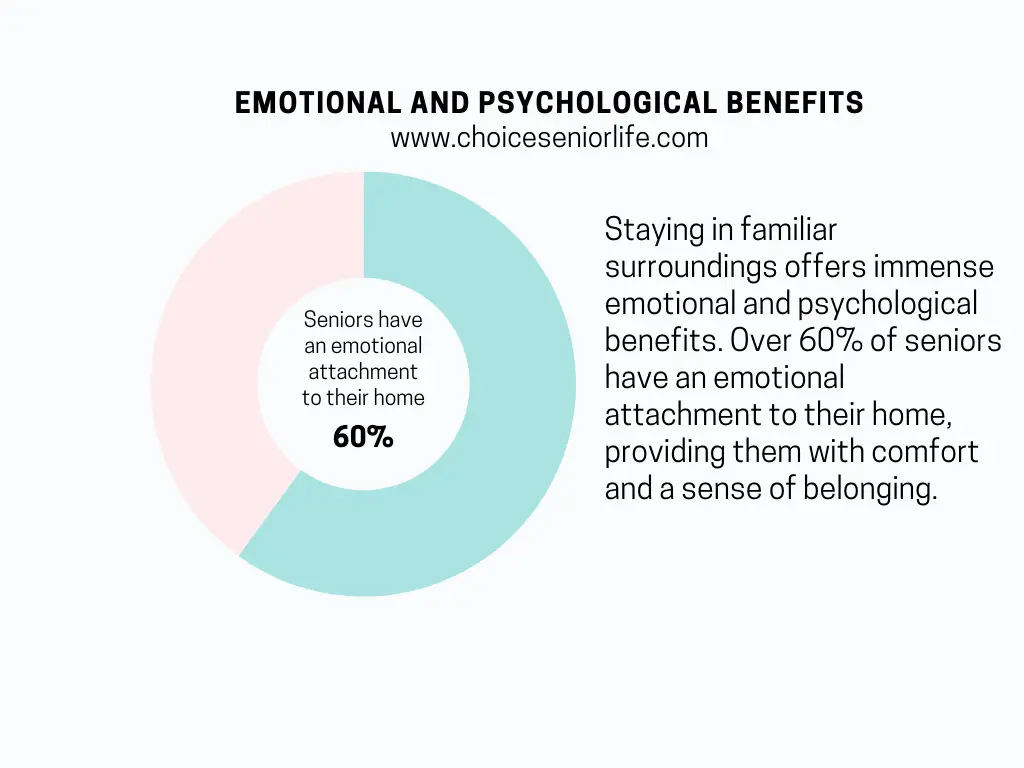
Staying in familiar surroundings offers immense emotional and psychological benefits. Over 60% of seniors have an emotional attachment to their home, providing them with comfort and a sense of belonging.
Independence and Autonomy
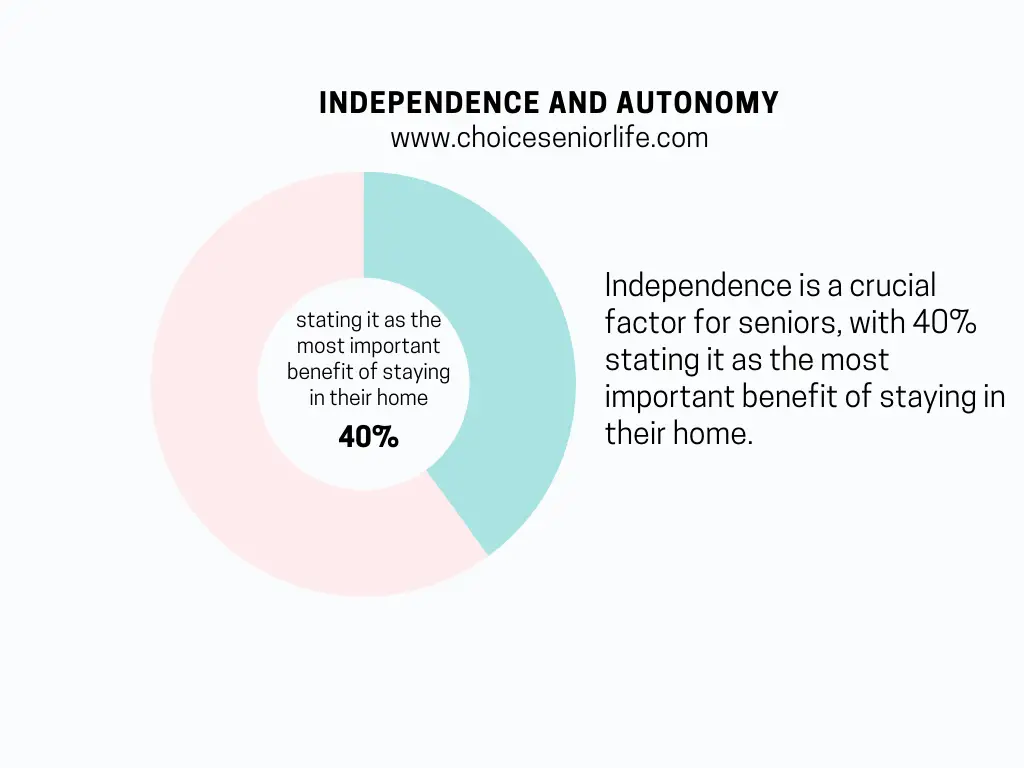
Independence is a crucial factor for seniors, with 40% stating it as the most important benefit of staying in their home.
Economic Considerations
Economic considerations play a significant role. While home modifications for accessibility can cost up to $100,000, the cost is often more affordable compared to the annual expenses of assisted living, which can be around $54,000.
Statistics on Senior Citizens’ Preferences
Survey Findings and Research Studies
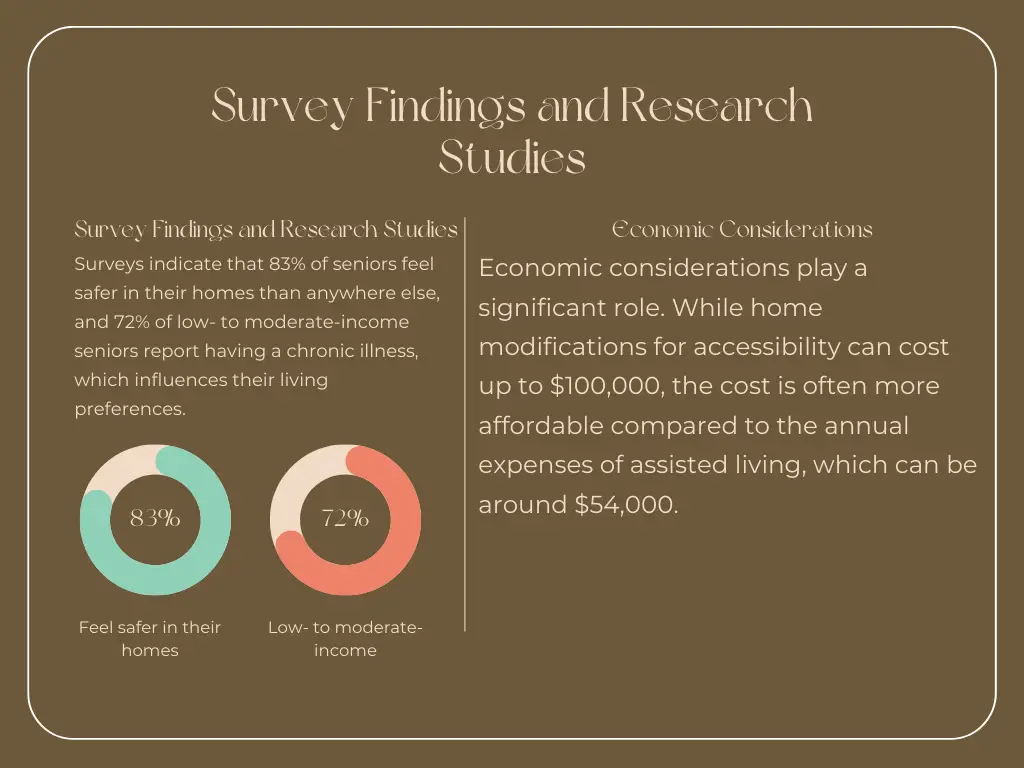
Surveys indicate that 83% of seniors feel safer in their homes than anywhere else, and 72% of low- to moderate-income seniors report having a chronic illness, which influences their living preferences.
Regional Variations
There are regional variations in preferences, with some areas showing higher rates of seniors opting to age in place.
Factors Influencing Decisions
Factors influencing seniors’ decisions include health concerns, the desire for independence, and financial considerations.
Challenges and Solutions
The challenges of aging in place include the need for home modifications and the availability of caregiver support. Solutions involve investing in home safety, creating a care plan, and managing physical health.
The Role of Technology
Technology plays a crucial role in enabling seniors to age in place comfortably. From medical alert systems to smart home devices, technology enhances safety and convenience.
Government Policies and Initiatives
Government policies and initiatives are essential in supporting seniors who choose to age in place, including financial assistance for home modifications and healthcare services.
Conclusion
Aging in place is a preferred option for many seniors, offering emotional, psychological, and economic benefits. As we continue to see a rise in the senior population, understanding and supporting their preferences to age in a familiar environment is vital.

Morgan Elfman is a compassionate writer, dedicated caregiver, and passionate advocate for senior well-being. Born and raised with a deep sense of empathy and a natural inclination towards service, Morgan has devoted her life to making a positive impact on the lives of seniors.
As a writer for www.choiceseniorlife.com, Morgan utilizes his skills to create insightful and informative content that addresses the unique needs and challenges faced by seniors and their families. Her articles not only provide valuable information on health, lifestyle, and care options but also strive to inspire and empower seniors to lead fulfilling lives.
